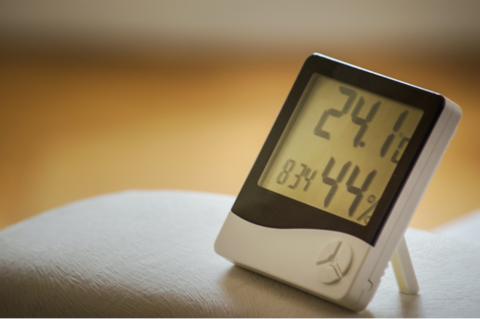Keeping track of all the things that affect your home can be hard, but by getting ahead of them you can greatly minimize the work. One way to get ahead of problems in your home is making sure that your home’s humidity is in the range it should be. It may seem trivial but making sure you have ideal home humidity is a great way to nip a few problems in the bud while ensuring your home is as comfortable as possible.
Why Home Humidity Matters
Home humidity is not something you want to be extreme on either end of the spectrum. Both low humidity and high humidity can cause problems for you, your home, and the people who live with you. Low home humidity mainly causes trouble for people, because the lack of moisture in the air is bad for the body. It can lead to dry skin, headaches, increased risk for viruses, bacteria, and respiratory infections, and can irritate those with allergies or asthma.
High humidity can also cause those with allergies or asthma to have trouble in your home, but it mainly creates problems for the home. The excess moisture causes condensation to collect, and this is especially problematic in the dark, less-visited areas of the home. This is because high humidity creates an optimal environment for mold and bacteria to grow and can attract pests quickly. In areas of the home that you don’t check often, these problems can quickly grow to require significant work to remove.

Optimal Home Humidity
The Environmental Protection Agency states that indoor relative humidity (RH) should not exceed 60% and should be kept between 30% – 50%. At this humidity you shouldn’t notice excess condensation in the home around windows or on the walls, and surfaces should dry relatively easily when there is good airflow. If you’re noticing signs that your home humidity may be above or below the ideal threshold, it may be time to consider testing your home humidity yourself or calling a professional.
How to Test Home Humidity
There are two main ways to check home humidity. The first, the Ice Cube Test, is easy and fast but will only give you a rough idea of your home’s humidity level. To do the test, fill a glass with water and drop in two or three ice cubes. Leave the glass in room that will not be disturbed and return in four minutes. If the glass has condensation dripping down the sides, your humidity is likely too high. If the outside of the glass is dry, the humidity is too low. What you want to see is light condensation on the outside of the glass, but not enough that it is actively dripping off. That will tell you that your humidity is likely in the ideal range.
The Ice Cube Test is convenient, but it won’t give you an exact reading of your home’s humidity, and the humidity of different rooms could affect it. If you want a more accurate reading of your home humidity, purchase a hygrometer or humidity gauge. You can generally find one at your local hardware store for less than $30, and it will give you a much more exact reading on your humidity.
Who to Call For Advice
If your home humidity is at either extreme, it’s a good idea to call professionals for advice on how to keep your humidity in the ideal range. You can reach out to your local experts at Triad Mechanical at our website or call us at 770-682-0075.
